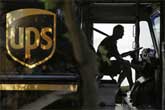| |
|
| |
|
 |
Supply
Chain by the Numbers |
| |
|
| |
- September 18, 2014 -
|
| |
|
| |
|
| |
|
| |
UPS Bulking Up Manpower for 2014 Peak; Here Come Ships Bearing Gypsy Moths; Some but Not All Getting Procurement ROI; Tesla's Sweet Nevada Factory Deal |
| |
|
| |
| |
| |
95,000 |

|
|
|
| |
| |
|
11.4
|
|
The payback top procurement organizations get from their investment in supply management people and tools, meaning 11+ dollars in hard savings come back from each dollar invested. The number for the average firm: a ratio of just 4.5, a positive return for sure, but less than half that of the leaders. All this according to a new study from AT Kearney, Institute for Supply Management, and the Chartered Institute of Purchasing and Supply, based on a unique measurement system developed by Kearney. Laggard companies: they get back a little less than they spend. Ouch. This is some interesting stuff – see Delivering ROI and Relevance from Procurement Operations.
|
| |
| |
|
| |
| |
$1.3 Billion |
|
The amount of tax breaks that electric car maker Tesla will receive from the state of Nevada in return for deciding to build its new $5 billion battery factory in the Reno area. While all companies work hard for these types of deals, Tesla may have taken it to new levels, starting with a formal bidding process across states, with a minimum opening bid of $500 million in tax breaks. With the Nevada deal, Tesla will be exempt from property taxes for 10 years and sales taxes for 20 years. It will also get $195 million in transferable tax credits that it can sell to any other businesses. Tesla also gets a 10% to 30% electricity discount over eight years, and can sell excess electricity it generates from renewable sources it is building back to the electric companies for a healthy profit. On top of all that, its current battery maker Panasonic is going to pay 30-40% of the cost of factory construction in return for running the place as a contract manufacture. This has to be one of the greatest negotiating successes for a new plant of all time
|
| |
| |
|
|
|
| |
 |
 |
| |
|
|
| |